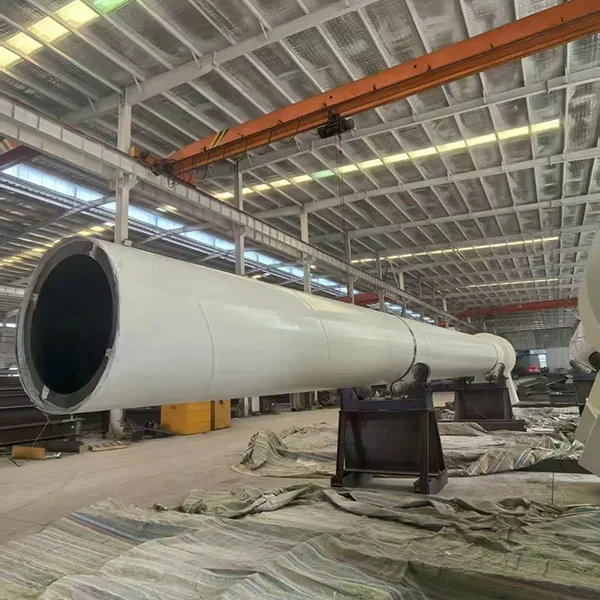As the construction industry's demand for "large spans, fast construction, and low energy consumption" continues to grow, the drawbacks of traditional concrete materials—heavy weight, slow construction, and high pollution—are becoming increasingly prominent. Building Materials For Steel Structure, with their high tensile strength, high degree of prefabrication, and recyclability, have become the preferred solution for large venues, industrial plants, and other applications. And this drives the construction industry toward efficient and green transformation.

Large stadiums and exhibition centers require long-span column-free spaces, and steel structure materials offer significant adaptability:
They are mainly used for venue roofs and truss structures. For example, large-span steel trusses adopted in stadiums can have a single span of over 60 meters—50% longer than that of concrete structures—enabling the design of "column-free spectator seats" and improving space utilization;
Their self-weight is only 1/3 of that of concrete structures with the same span, which reduces the load on foundations. Meanwhile, the prefabrication rate of components reaches over 90%, shortening the on-site installation cycle by 40%—meeting the needs of large venues for "fast construction and efficient commissioning."
Industrial workshops need to bear heavy equipment and accommodate frequent renovations, and steel structure materials have outstanding advantages:
Suitable for mechanical processing and heavy equipment workshops, they are built with H-beams and steel columns. A single steel column can bear a load of 50–200 tons—30% higher than that of concrete columns—allowing direct installation of heavy equipment such as cranes and production lines;
Prefabricated construction eliminates the need for on-site pouring, shortening the construction cycle by 30%–50% compared with concrete workshops. During subsequent workshop renovations, steel structures can be flexibly disassembled and reassembled, avoiding the "difficulty in demolition and renovation" of traditional workshops.
High-rise buildings like office buildings and high-end apartments need to balance safety and space efficiency, and steel structure materials perform excellently:
When used for the main building frame, the self-weight of steel structures is 40% lighter than that of concrete structures. This reduces the overall load of the building and increases the net floor height (0.3–0.5 meters higher than concrete buildings of the same height);
Their seismic grade can reach above Grade 8, and their wind resistance is 25% better than that of concrete structures—this makes them suitable for areas with frequent earthquakes and high wind speeds. At the same time, the industrialized production of components reduces on-site dust pollution, and this meets green building standards.
Highway and railway bridges need to withstand vehicle loads and natural erosion for a long time, and steel structure materials are highly reliable:
When used for bridge girders and steel tower structures, they are made of weathering steel. This kind of steel doesn’t need frequent painting for maintenance. Their service life can reach more than 50 years, and this reduces maintenance costs by 60% compared with ordinary carbon steel bridges;
Long-span bridges adopt steel box girder structures, with a single span of 100–500 meters—and this makes them suitable for complex terrains like rivers and canyons. Also, prefabricated components are easy to transport, and the on-site installation efficiency is 35% higher than that of concrete bridges.
| Application Scenario | Typical Project Types | Core Material Characteristics | Key Data | Core Value |
|---|---|---|---|---|
| Large Public Venues | Stadiums, exhibition centers | Long-span, lightweight | Single span ≤ 60m, construction cycle reduced by 40% | Breaks spatial limitations, enables fast commissioning |
| Industrial Workshops | Heavy equipment, mechanical processing workshops | High load-bearing, easy to renovate | Single column load: 50–200 tons, cycle reduced by 30% | Adapts to heavy loads, enables flexible renovation |
| High-Rise Buildings | Office buildings, high-end apartments | Wind-resistant, seismic-resistant, lightweight | Seismic grade ≥ Grade 8, net height increased by 0.3–0.5m | Safe and stable, optimizes living space |
| Bridge Engineering | Highway bridges, railway bridges | Weather-resistant, corrosion-resistant, long-span | Service life ≥ 50 years, maintenance cost reduced by 60% | Weather-resistant and durable, adapts to complex terrains |
Currently, Building Materials For Steel Structure are evolving toward "modularization and intelligentization": Some enterprises have launched prefabricated steel structure modules to realize "building block-style" construction; BIM (Building Information Modeling) technology is integrated to optimize component design and reduce material waste. As a core material for the green transformation of the construction industry, its in-depth application across multiple scenarios will continue to drive cost reduction, efficiency improvement, and carbon emission reduction in the construction industry.